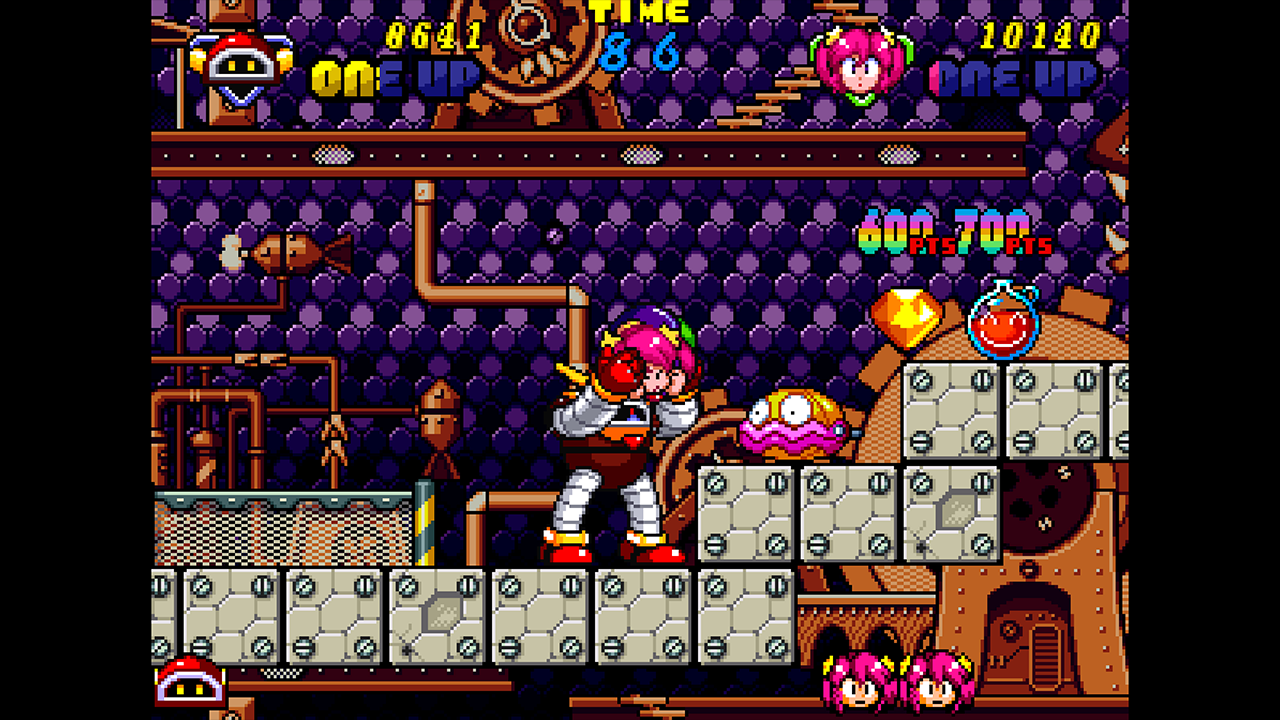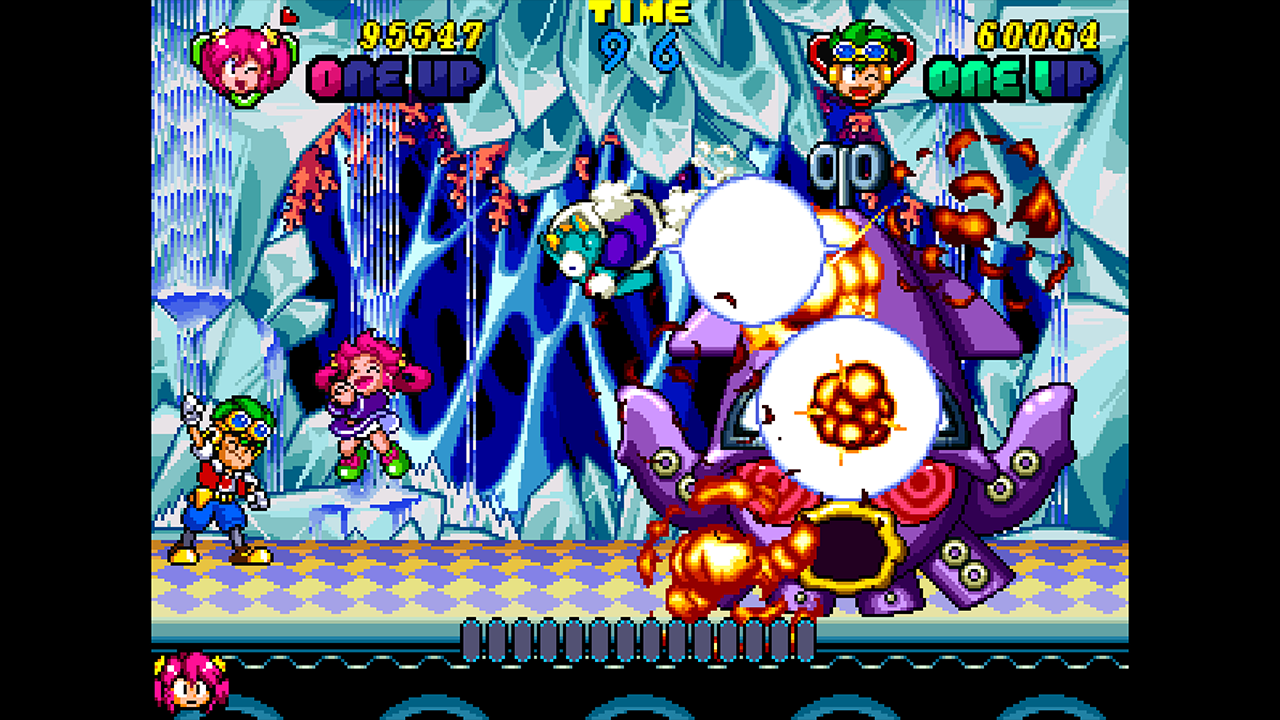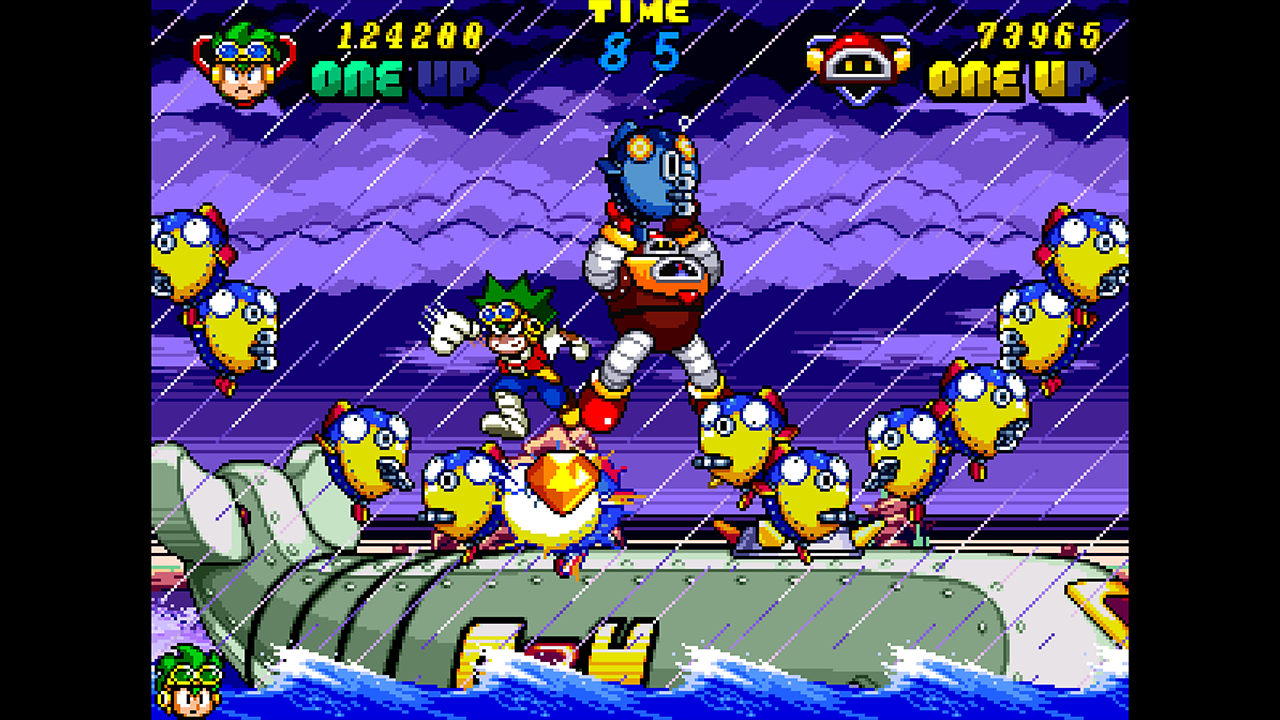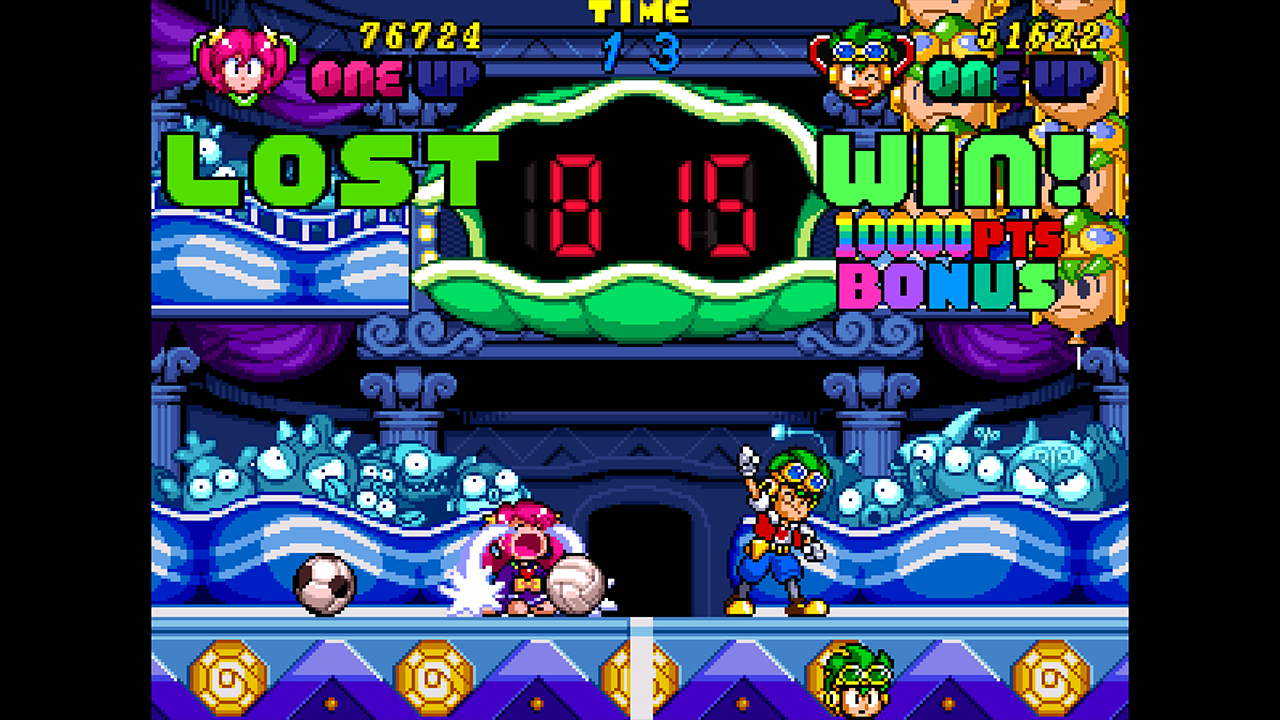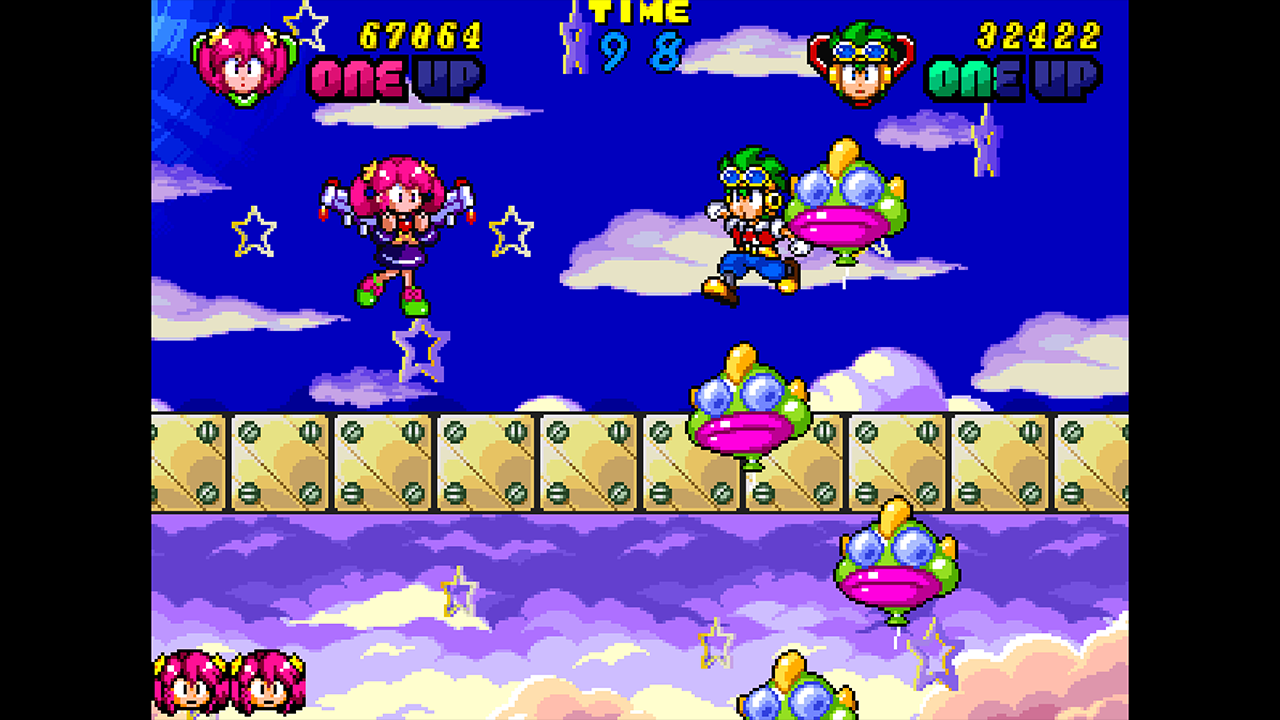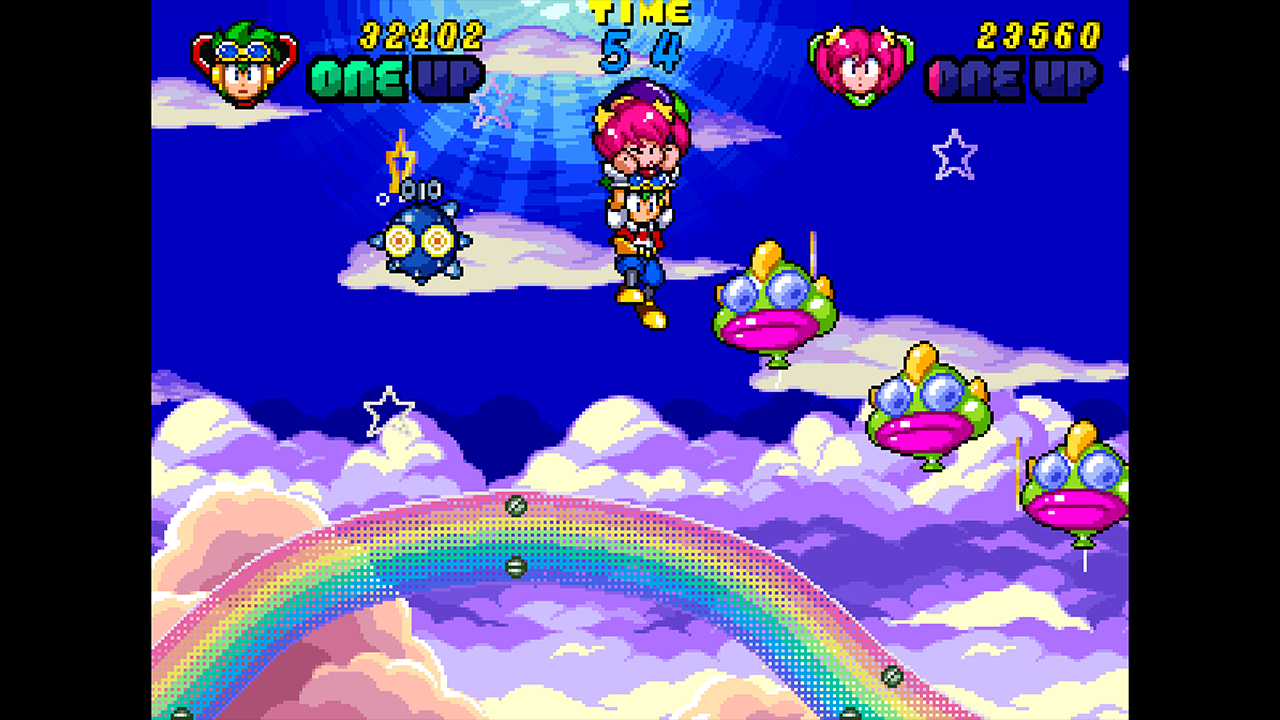Game: “Clockwork Aquario”
Clockwork Aquario
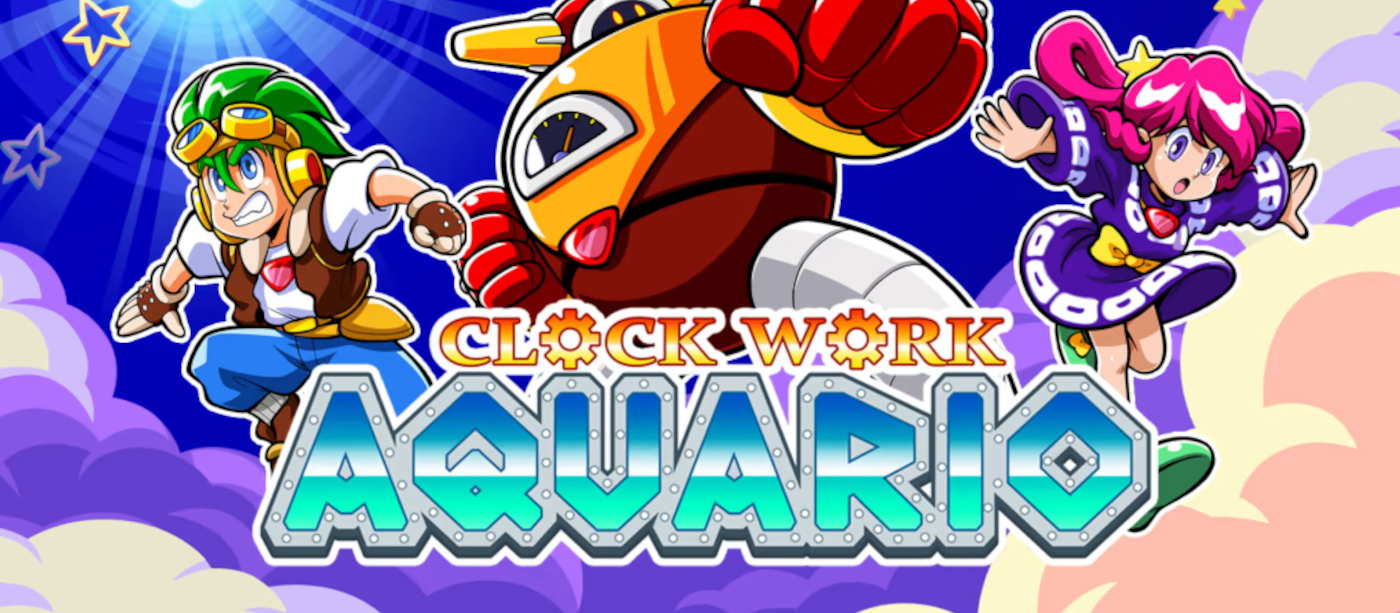

Thirty-five years ago people left the comfort of their house and headed to a place filled with hulking machines that each had one video game loaded into them. Known as ‘arcades’, people would drop 20p into a waiting slot and the game would spring to life. One of the producers of these arcade games was Westone, a company who created coin gobbling games such as Wonder Boy, Jaws and Mega Bomberman. In 1992 they developed their last arcade game, Clockwork Aquario, but due to consumers shifting away from arcades, the project was scrapped just as the game was ready to be released. After Westone went defunct in the noughties, the game was seemingly lost forever as Sega gobbled up all of the rights to their back catalogue along with the original code for the game. That was until ININ games, the publisher of many arcade titles, not only managed to track down the source code, but with the help of former Westone developers managed to resurrect the project and cap off a near-30 year journey by realising Clockwork Aquario on home consoles.
At A Glance
| Scores | |
| Visuals | 7/10 |
| Sound | 7/10 |
| Gameplay | 5/10 |
| Overall | 5/10 |
| Positives | + Beautiful pixel art + Catchy soundtrack + Two player mode |
| Negatives | – Far too short – Inconsistent hit boxes – Low replayability |
| Price (When Reviewed) | £16.99 |
| Our Playtime | 2 hours |
| Available On | Nintendo Switch, PS4 |
Clockwork Aquario is a side-scrolling arcade romp that pits a trio of heroes: Huck Rondo, a gunslinger that doesn’t fire one shot, Elle Moon who is apparently magical, and Gash the robot, a hulking mechanical beast that looks like it’s come from an episode of Lost in Space. All heroes need an antagonist and here they’re facing a psychotic aquatic scientist, Dr. Hangyo, who has aspirations to take over the world.
The straightforward premise is matched equally by the simple and intuitive controls; one button jumps, the other slaps enemies. Clockwork has most things I’d expect from an arcade game; two hits and you lose a life, and losing three lives results in using a continue (or a game over screen if none are left). All the small details are there: a level-timer that counts down from 99, and the characters share the same set of skills, although Gash has an ever so slightly higher jump, presumably down to those robotic legs. Nobody can deny that Clockwork is a typical arcade side-scroller and it pretends to be nothing more.
Every arcade game needs a hook to encourage gamers to drop their hard earned pennies into the machine, and for Clockwork Aquario that is undoubtedly the gorgeous visuals. The character sprites for our heroes are well designed, each embodying that 90s anime aesthetic that never goes out of fashion. Even the enemies, which are usually an afterthought, are well crafted and full of personality, such as the bright orange robotic clam that raises an eyebrow just before expectorating a fireball. And complimenting the sprites style are colourful backgrounds, ranging from a submarine level full of pulleys and spikes to a sky environment with vibrant rainbow pathways, and they really pop on whatever screen is being used. Westone have also added in a plethora of visual options to either modernise the game by stretching it into a widescreen format, or apply a number of retrovisual filters, like a CRT screen for those looking for that old school arcade appearance. It might be sacrilegious but after trying out the number of options, I did settle on the HD crisp, pixel perfect mode to really make the colours leap off the Switch’s screen.
In a busy arcade environment, surrounded by the loud plinky-plonks of various machines, and arguments over who was next up at the pool table, it could be said that the soundtrack to the games being played doesn’t matter as you won’t really be able to hear anything. With Clockwork though, time has been taken to perfect the soundtrack. Shinichi Sakamoto, a legend best known for his work on the Wonder Boy series, composes a thumping 90s techno soundtrack that perfectly accompanies the game’s visuals and digging through Clockwork’s menu, the full tracklisting, complete with modern remixes are there just to listen through without the pressure of being attacked from all angles.
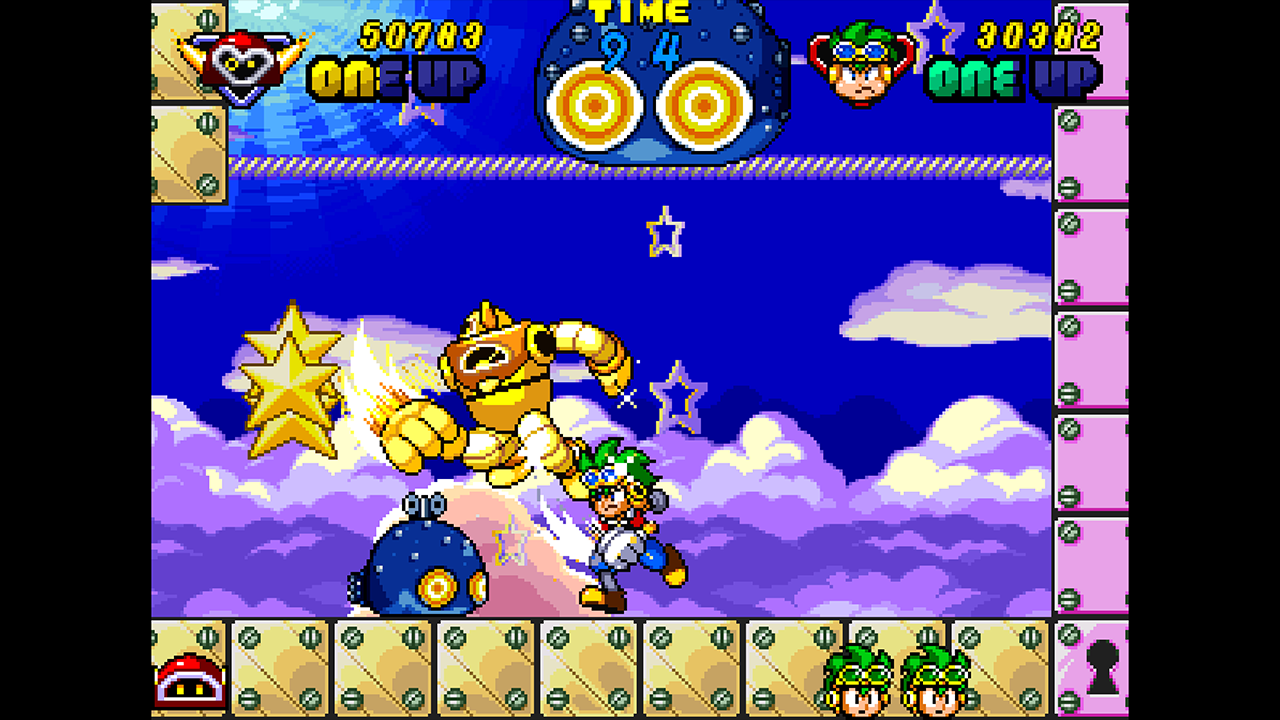
Judging from just the bodywork, Clockwork Aquario is a well packaged arcade side-scroller, but lifting the bonnet presents a few issues. The menu UI is a little on the squiffy side, with some unresponsive buttons, particularly when entering in the name for the leaderboard or having to hold the ‘plus’ button for a few seconds to pause the game being a chief examples.) Slapping and stomping enemies is also hit and miss as sometimes things will work just fine, and others will cause the character to shout out in pain. More than once, I found myself either being hit despite being out of range of a robot or I’d jump on the head of a baddie and it’d be as if I landed on a spike, despite doing the same thing to their mate a few milliseconds earlier. These aren’t prolific problems and are manageable, but they are irks of the gameplay to be aware of.
Those issues might not be deal breakers, but the biggest problem with Clockwork Aquario is the run time. There are five stages and each one is made up of one level and one boss, which depending on player skill, will each take up toan hour to complete – though in all likelihood this will be more around the 30-45 minute mark. There are three difficulty levels to choose from but rather than ramp up the number of enemies or give the bosses more life, the only difference is the number of continues given. And even on the hardest difficulty, three is more than enough to manage a playthrough. If there had been one or two tweaks, even something simple like speeding up enemy attacks or changing the baddie placements, this would have given Clockwork Aquario more of a weighty challenge to the proceedings. As it stands though, there is little challenge to a short game.
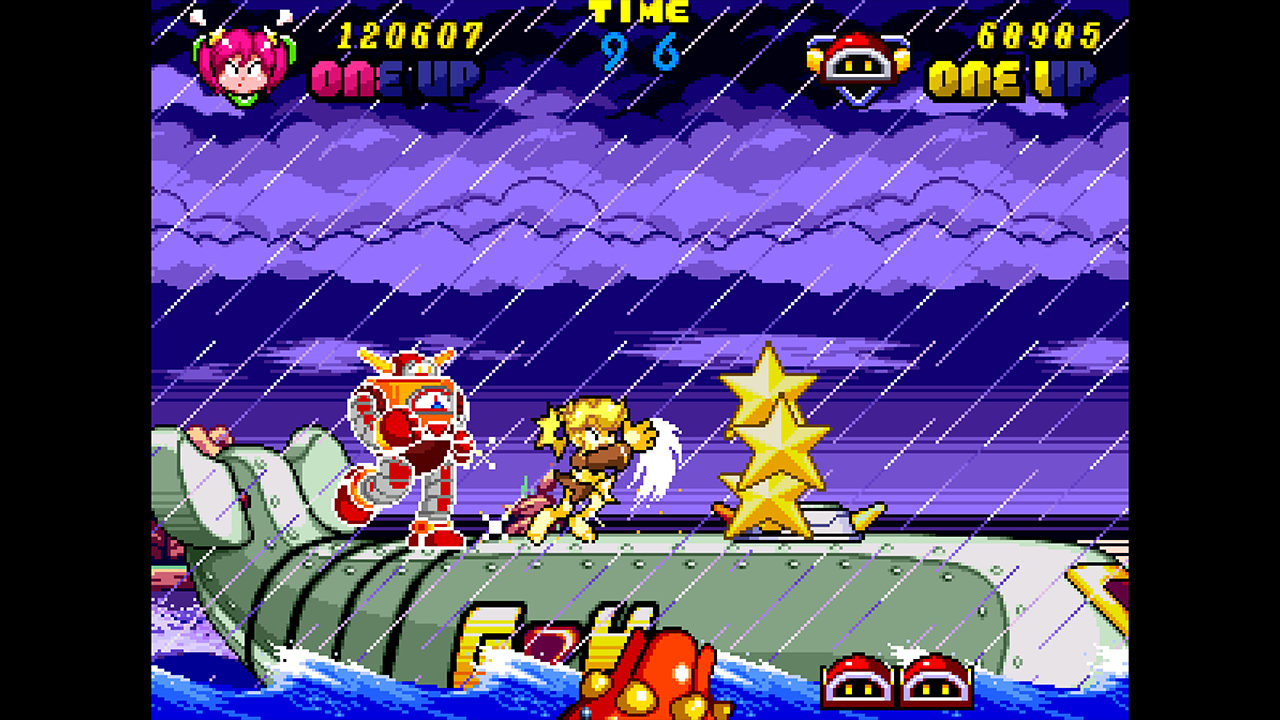
The replayability of Clockwork Aquario is rather low too; once the credits have rolled for the first time an arcade mode opens up that allows the player to determine how many credits they start with… and that’s it. There is a lovely art gallery that is unlocked as standard, meaning the only thing to replay the game for would be the glory of the on-system highscore, as there’s no online leaderboards available to compete with other players. It’s a shame the game wasn’t more restrictive to start with, having to work through the easy difficulty to unlock normal and so on as this would’ve given Clockwork more life.
While the game might be a little on the short side, I cannot stress enough that playing Clockwork Aquario with a second player is an absolute must. Having P2 drop into the game adds another layer of depth. More enemies appear on screen and while each player can attack individually, pressing the attack button close to your buddy will lift them up, ready to be launched at the oncoming barrage. This can be used to the team’s advantage, or to the detriment of the person being hoofed around the stage, depending on your mood and relationship with your teammate! There’s also an exclusive two player minigame to be found where balls are thrown at the opposing player’s balloons, with the winner securing a large addition to their score. It’s not groundbreaking by any stretch of the imagination but it’s a fun addition that adds a couple of minutes to the playthrough.
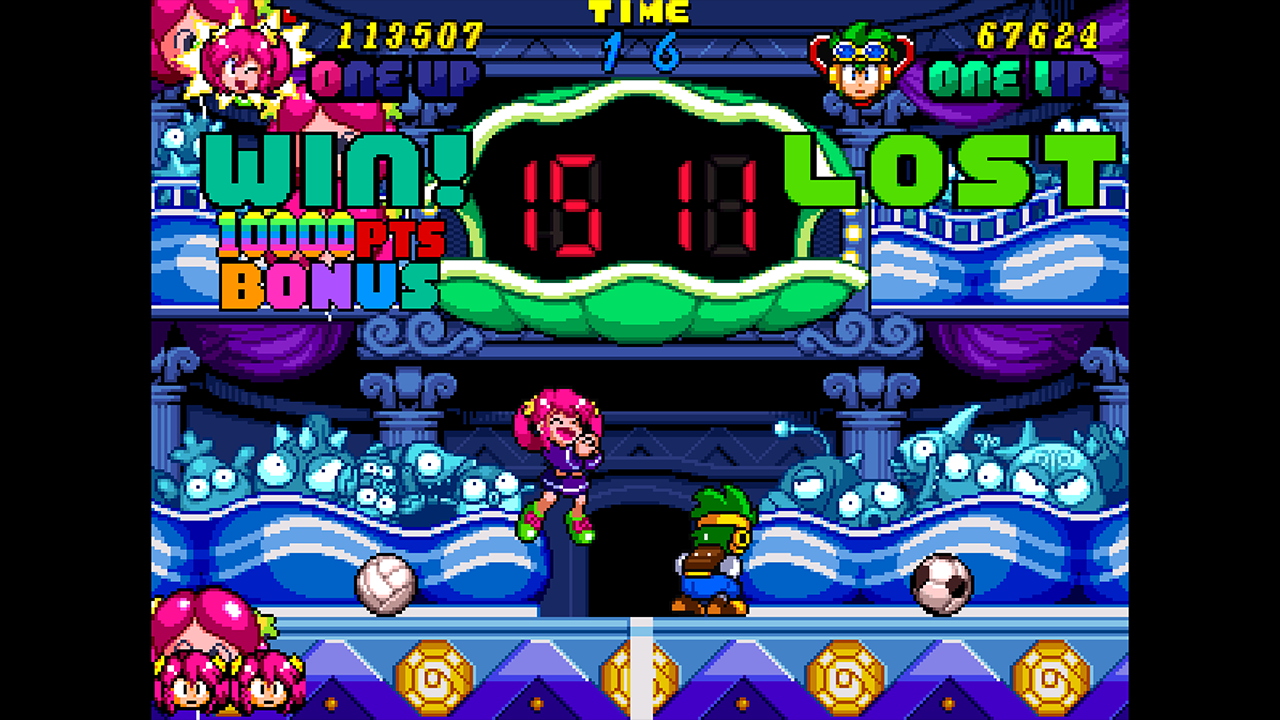
Clockwork Aquario is a good arcade side scroller; the character sprites and environments are well designed and the soundtrack fits the arcade set up beautifully, and the co-op mode is where most fun can be found. I was willing to forgive the janky UI and hit boxes that only work some of the time because it is a genuinely lovely experience, but I struggled with how little game there is. As a rule, I expect arcade games to be on the short side but I also expect a level of challenge to counteract this disadvantage, and sadly Clockwork Aquario offers little challenge and can be completed in next to no time at all. Once the game has been beaten for the first time everything is unlocked and the only thing left to do is look at a rather nice gallery or try to beat your own high scores. If there is one element that saves Clockwork from being forgotten for another thirty years, it is it’s co-op mode. While the levels stay the same, save for a few extra baddies, the frantic experience of simultaneously playing with and against Player Two is the genuine highlight of the game.
In the interest of full disclosure, the publisher provided VGamingNews with a copy of the game in order to conduct this review.
Arcade Side Scroller Clockwork Aquario Comes To Switch & PS4
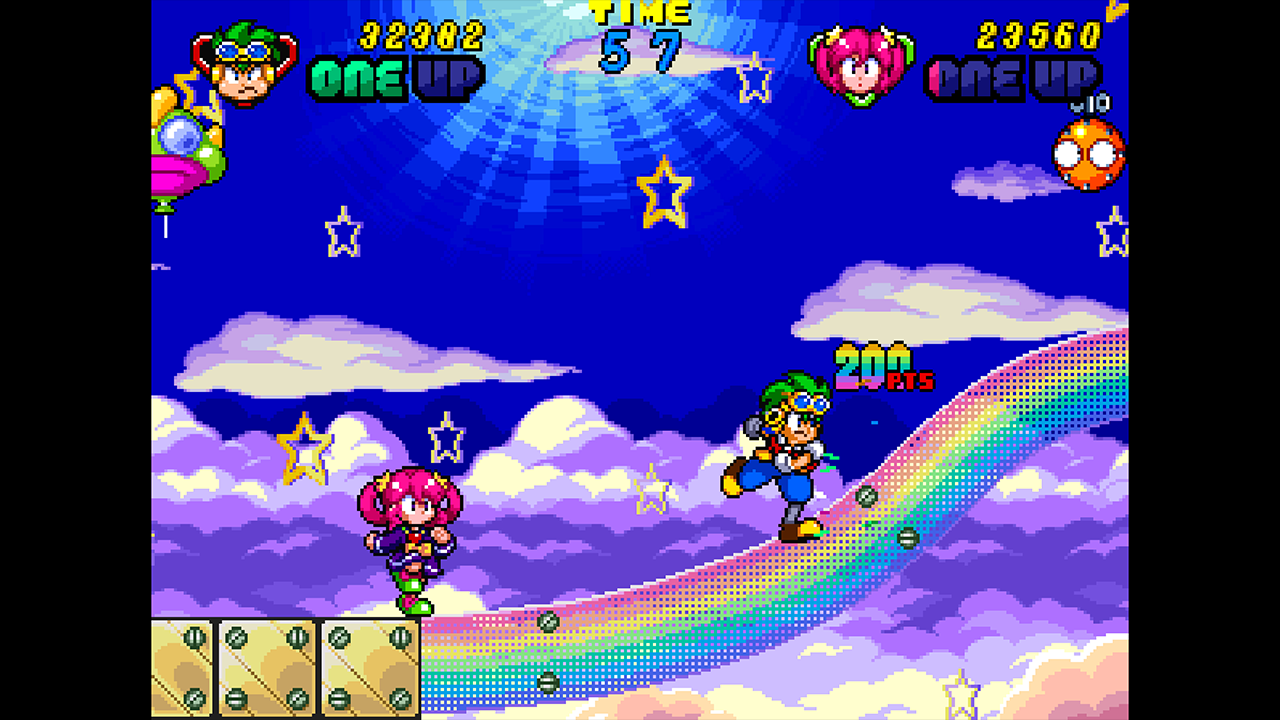
Clockwork Aquario from developer studio Westone (Wonder Boy series) is a 2D arcade beat ’em up was thought to be lost is getting a release on consoles after nearly three decades in the void. The colourful, 2-player action game is being published by arcade spealists ININ Games and will release on 30th November for us in Europe and on 14th December in the North American markets.
Read On

